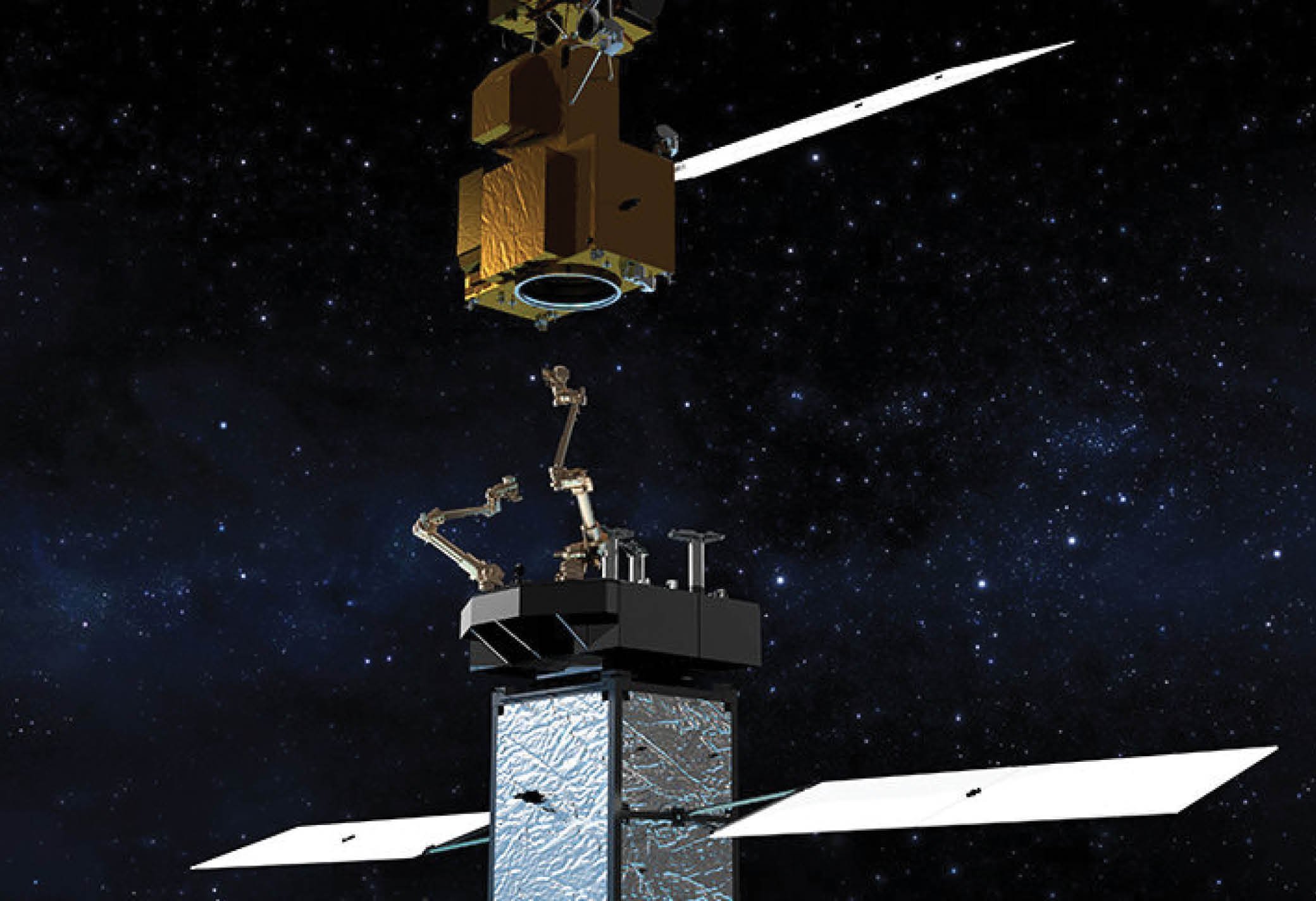SOURCE: AFI


The Indian Air Force (IAF) is calling upon the private sector to design and develop cutting-edge technologies for Autonomous Docking Operations aimed at enabling On-Orbit Maintenance and Refueling (OOMR) of space assets. This ambitious initiative is part of the IAF’s broader efforts to enhance the operational longevity and capability of India’s space-based assets through innovative space servicing technologies. The project represents a significant leap in the country’s space capabilities, particularly in the areas of spacecraft refueling, maintenance, and upgrading operations while in orbit.
As space becomes an increasingly critical domain for defense, communications, and surveillance, maintaining the health and operational effectiveness of satellites and spacecraft is paramount. To address this, the IAF has launched a project to develop Autonomous Docking Technologies for on-orbit servicing of space assets, including refueling, maintenance, and upgrading operations.
The challenge requires private sector firms to design and create solutions that can precisely guide spacecraft during rendezvous, proximity operations, and docking with friendly or cooperative spacecraft in need of servicing. These technologies will enable autonomous operations without human intervention, a necessity in the hostile environment of space.
Key Objectives and Requirements
The IAF has outlined a comprehensive set of requirements for the development of On-Orbit Maintenance and Refueling (OOMR) technologies. The challenge focuses on designing and developing systems that will allow autonomous spacecraft to dock with other spacecraft, enabling them to refuel, maintain, and upgrade the space assets already in orbit. The following are the key objectives:
The autonomous spacecraft should be capable of self-monitoring and diagnosing potential malfunctions, with the ability to execute abort procedures if required.
Precise Rendezvous and Proximity Operations:
The spacecraft must be equipped with guidance technologies capable of performing rendezvous and proximity maneuvers with target spacecraft. This includes the ability to approach the target spacecraft from varying distances while ensuring safety and precision. Proximity operations involve fine-tuning the spacecraft’s position and velocity to ensure that it remains within a safe and controlled distance from the target before initiating the docking phase.
Autonomous Docking Systems:
The core of the project is to develop autonomous docking capabilities. The spacecraft must be able to align with the target and execute precise docking operations using advanced guidance, navigation, and control systems. The docking system must handle the complexities of space, where even small errors can have catastrophic results. The system needs to ensure precision during the final approach, with the ability to make minute adjustments in real-time.
In-Orbit Servicing Operations:
After docking, the spacecraft will undertake in-orbit refueling, maintenance, and upgrading operations. These operations may include the transfer of fuel, repair or replacement of faulty components, and potential software or hardware upgrades to extend the operational life of the target spacecraft. The system must be capable of handling multiple missions, allowing for repeated refueling or maintenance operations on various spacecraft.
Modular and Scalable Design:
The technologies developed must be modular and scalable, allowing them to be used for servicing a range of space assets, including satellites and other spacecraft. This flexibility will enable the IAF to extend the operational life of its space-based assets while reducing the need for frequent satellite launches.
Safety and Redundancy:
Given the high-risk nature of on-orbit servicing, the system must incorporate robust safety protocols and redundant systems to ensure mission success in the event of unforeseen challenges or system failures.
The ability to perform On-Orbit Maintenance and Refueling (OOMR) represents a paradigm shift in how space assets are managed. Traditionally, satellites and other spacecraft have a fixed operational lifespan, after which they become obsolete or inoperative, requiring costly and complex replacement missions. With OOMR technology, these space assets can be serviced in orbit, significantly extending their lifespan and improving their performance.
This capability is particularly critical for the IAF, which relies on a variety of space assets for communications, surveillance, and reconnaissance. As space becomes more congested and contested, having the ability to autonomously refuel and maintain these assets provides a significant strategic advantage, ensuring that India’s space assets remain operational and effective for longer periods.
While the IAF’s focus is primarily on defense-related space assets, the OOMR technology has potential applications beyond the military domain. Commercial satellites used for telecommunications, earth observation, and navigation could also benefit from on-orbit servicing, enabling companies to maximize their investment in space infrastructure. Furthermore, as space exploration continues to advance, this technology could play a key role in the maintenance of space stations or even deep-space missions.